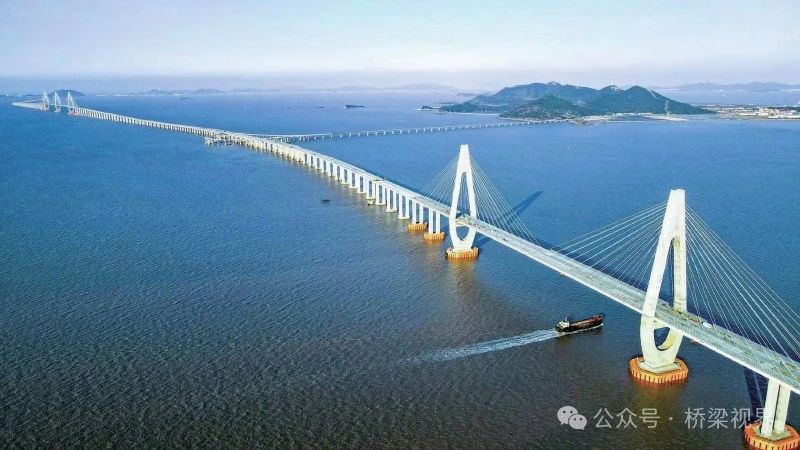
A bridge refers to a structure built to allow roads to cross natural or artificial obstacles, generally referring to structures erected over rivers, lakes, and seas (also including mountain streams, poor geological conditions, or to meet other needs) to allow vehicles and pedestrians to pass through smoothly. The “Zizhi Tongjian · Tang Records” also metaphorically refers to people or things that can serve as a connection.
The definition of bridge design involves multiple aspects, including basic functionality, structural characteristics, and aesthetic and landscape design. As structures that span rivers, valleys, or other traffic routes, bridges primarily meet basic transportation needs. With economic development and scientific and technological advancements, bridge design not only focuses on mechanical principles but also increasingly emphasizes the integration of aesthetic rules and humanities. Landscape bridges exemplify this trend, emphasizing the overall consideration and design of surrounding environmental elements in the bridge design process, including natural and artificial elements, to achieve harmony between the bridge and the natural environment, enhancing usability, comfort, and aesthetic appeal. Therefore, bridge design is not just a definition of its structure and function, but a comprehensive body that integrates engineering technology and artistic design, aiming to create both practical and aesthetically pleasing transportation structures.
Architectural aesthetic principles include the combination rules of points, surfaces, bodies, and colors, such as variation and unity, contrast and harmony, proportion and scale, symmetry and balance, rhythm and cadence, blank space and virtual reality.
Bridges carry humanistic elements
The humanities are a discipline that studies human thought and culture, primarily researching human values, meanings, experiences, and reflections. The field of humanities is extensive, including literature, history, philosophy, art, linguistics, archaeology, and other disciplines. These disciplines collectively explore human nature, the laws of social development, and the spiritual world of individuals.
Bridge landscape design aims to organically integrate bridge structures with natural scenery and cultural landscapes, embodying the cultural value of strength.
For example, the following text seems ordinary but immediately transports the reader to a fairy-like realm: “Busy but measured, leisurely but interesting, blending the ordinary and the minute into a beautiful mood, the sunshine is beautiful, the breeze is sweet, inadvertently entering a fairyland, soothing the eyes and touching the heart.” Or “When you see the surging tides on the banks of the Qiantang River, it’s awe-inspiring, making you forget your worries, healing your low spirits, and inspiring high morale.”
The consideration of bridge design is to achieve such an effect. Therefore, how does a bridge embody beauty? The main body is the bridge structure, and the carrier should be human culture.
A bridge is both a connection and a communication, while beauty is a feeling and a value on a spiritual level. Different people may have different feelings about the same thing, but beautiful things must have their internal rules. Beautiful things must have proportional coordination, simple but not monotonous structure. For bridge design, it should be reasonably stressed without being artificial, fully embodying the harmonious unity of strength and beauty. It is a comprehensive body that integrates engineering technology and artistic design, aiming to create both practical and aesthetically pleasing transportation structures. In fact, it is another form of connection and communication of the bridge, extending people’s awe of the bridge’s magnificent momentum while bringing convenience and comfort to people’s travel, and the beautiful feeling produced by the resonance between the bridge and the soul aroused by the rhythm of the bridge span arrangement and the symmetry of the structure. It is the connection of the tangible world and the communication of the intangible world.
Every bridge is unique
The following examples illustrate this using several super-large bridges I was responsible for designing.
Hangzhou Bay Bridge
The Hangzhou Bay Bridge is too long, so we could only comprehensively consider the integration of horizontal, vertical, and transverse alignments with the bridge during the overall design to achieve the concept of a rainbow lying across the waves. Since there is only a driver’s viewpoint on the long sea bridge, we designed the visual effect of the towers protruding above the bridge deck. The design is simple and novel, becoming the visual center for drivers and passengers during the journey. The side railings are the only structure that can contrast with the sea and sky in the vast ocean. To prevent people from feeling monotonous while driving on the 36-kilometer sea surface, we adopted a design of seven-color railings: red, orange, yellow, green, blue, indigo, and purple. We also set up a 4A-level viewing platform, Sea and Sky Island, in the middle of the sea area to relieve drivers’ visual fatigue. In the part of the bridge that can be seen from the near-shore viewpoint, we used an inclined web box girder method, which visually reduced the height of the structure and increased aesthetics.
The Hangzhou Bay Bridge is located on the vast sea, with few landscape viewpoints. It mainly has three viewpoints: the bridge deck, the bridge heads on both shores, and the two navigation bridges. Among them, the bridge deck is the main landscape viewpoint. Therefore, according to its characteristics, the night lighting of the Hangzhou Bay Bridge is divided into four movements.
The first movement is “Silver Dragon Exploring the Sea,” mainly through the lighting of the bottom of the north and south approach bridges within the visible range of both shores, satisfying the visual experience of the bridge head viewpoints on both shores. The lights fade from the shore into the sea, as if a silver dragon is exploring the sea.
The second movement is “Seemingly Silver River,” mainly through the installation of fog-proof railing lights on the bridge deck, satisfying the viewpoint of driving on the bridge. The lights are faint and dreamy, as if the Milky Way in the sky has fallen into the distance.
The third movement is “Golden Triangle Gate,” mainly through the lighting of the main towers of the navigation bridges, stay cables, and steel box girders, satisfying the viewpoints of ships at sea and vehicles on the bridge. It is the highlight of the entire bridge lighting, symbolizing the golden triangle gate of Shanghai, Hangzhou, and Ningbo.
The fourth movement is “Pearl on the Sea,” referring to the night lighting of Sea and Sky Island. At night, various lights on the platform shine together, like a pearl on the sea, giving people on the bridge a pleasant surprise.
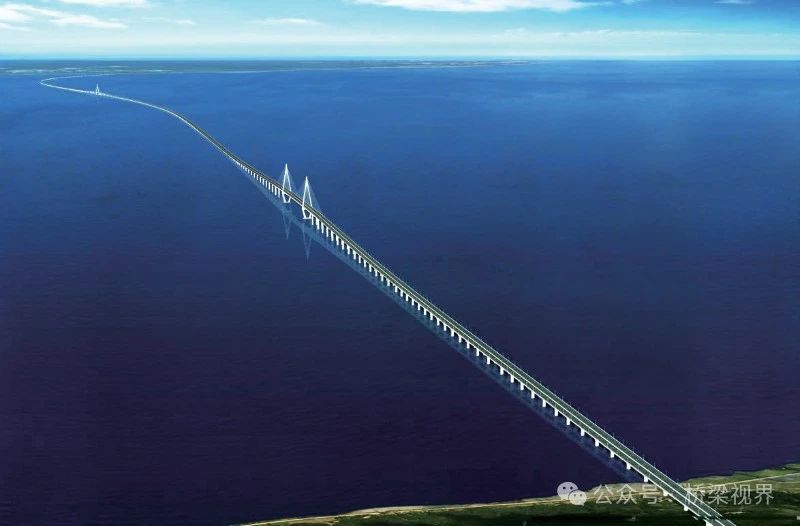
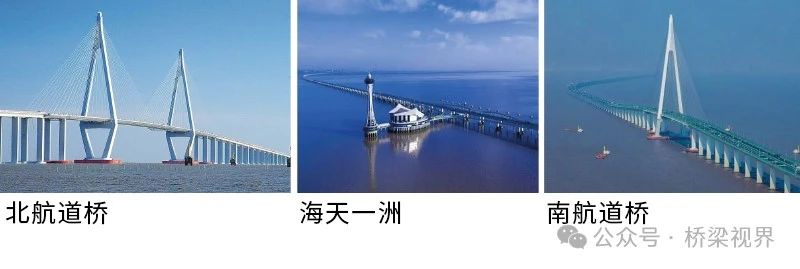
Jiaxing-Shaoxing Bridge
History is a flowing river, and bridges are frozen movements. Jiaxing and Shaoxing, two cities dependent on mountains and waters, geographically close, culturally connected, and economically integrated, both have very profound historical and cultural heritage.
Jiaxing is known as the “land of fish and rice” and the “capital of silk.” Jiaxing has a long history and splendid culture, being the birthplace of Chinese Jiangnan culture. Jiaxing has produced many famous people throughout history, including literary giants like Mao Dun, martial arts novelist Jin Yong, master of Chinese studies Wang Guowei, Crescent Moon School poet Xu Zhimo, cartoonists Feng Zikai and Zhang Leping, Buddhist master Li Shutong (Hongyi), famous mathematician Chen Shengsheng, and renowned writer Yu Hua.
Shaoxing is a place of talents and scenic beauty, with well-known stories like Yu the Great controlling floods and Goujian restoring his kingdom. It has produced calligraphy sage Wang Xizhi, philosopher Wang Shouren, historian Huang Zongxi, and many famous politicians, revolutionaries, and literary figures such as Qiu Jin, Lu Xun, Cai Yuanpei, and Zhou Enlai.
Both cities have produced a large number of famous Chinese literary masters who have greatly promoted the development and growth of Chinese literature. This shows the profound literary connotation of the two cities, which needs to be comprehensively considered in the landscape design of the bridge.
The architectural styles of Jiaxing and Shaoxing are quite similar, both having the architectural characteristics of the water town Wuzhen, but each with its own unique features. They mostly use simple combinations of black, white, and gray, forming a poetic and picturesque water town beauty. The architecture is simple and plain, with a strong flavor of the Jiangnan water town, revealing a very strong humanistic atmosphere and cultural connotation. The sword is the most beloved treasure among weapons for both scholars and warriors. “The sharp edge of a sword comes from grinding, and the fragrance of plum blossoms comes from the bitter cold.” The sword, known as the “king of all weapons,” represents righteousness and bravery.
The sword has never been weak or cowardly. It is calm and collected, clever and agile. It is the perfect harmony of spirit and character, the highest realm of the pursuit of ultimate beauty. It is the balance of hardness and softness, the harmony of balance, the wisdom of moderation, and the natural elegance. The noble sentiments and virtues represented by the sword are in harmony with the humanistic spirit of Jiaxing and Shaoxing. The tower design in the shape of a sword (see Figure 3) strives to organically combine these spirits with modern bridge technology, creating a majestic and aesthetically pleasing structure.
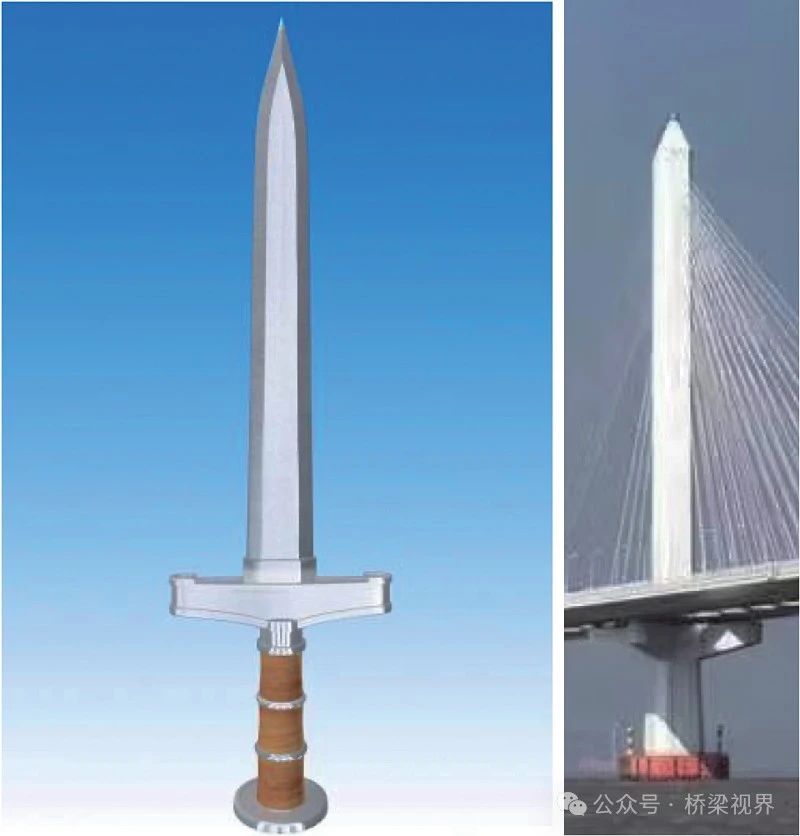
The tower above the bridge deck is in the shape of the number “1,” with an overall design that is simple and flowing, resembling giant writing brushes. It writes the development history of the project construction site. Standing on the sea surface, it can well reflect the profound humanistic and literary heritage of Jiaxing and Shaoxing. The two places have produced a large number of literary masters throughout history, and the design of the tower shape can harmonize with the humanistic characteristics of the two places. The huge and towering tower exudes a strong humanistic atmosphere. Mr. Lu Xun used his pen as a weapon to fight, a true warrior. The pen was his most powerful weapon, and he turned the pen in his hand into a sword, fighting for a lifetime for dreams and the awakening of the nation. The bridge design scheme incorporates some design elements of Chinese writing brushes based on the sword shape, perfectly combining the pen and sword shapes (see Figure 4), expressing the humanistic spirit characteristics of Jiaxing and Shaoxing very well.
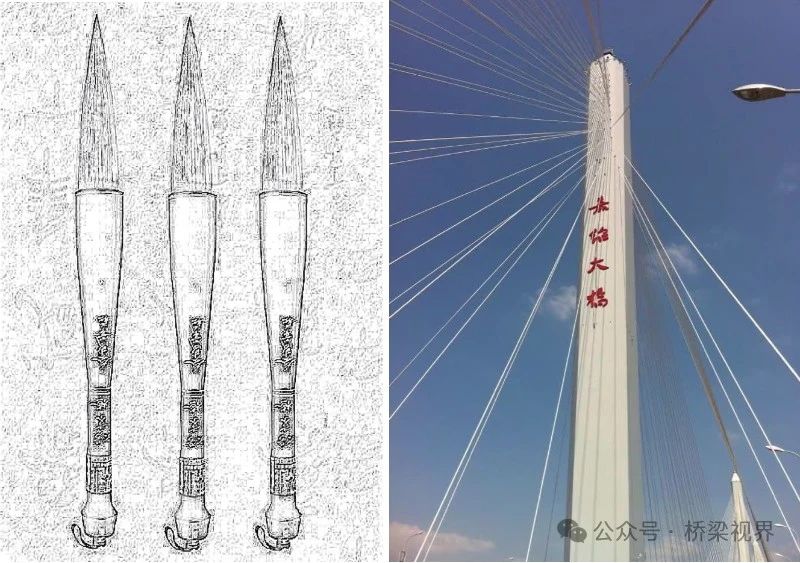
The injection of cultural connotation elements adds a striking touch to the bridge landscape, closely combining modern bridge technology with the humanistic landscape of the bridge. It resembles giant divine brushes, writing the wisdom and courage of the people of Jiaxing and Shaoxing across the blue sky, representing the people’s commemoration of the literary heroes who made great contributions to their hometown, and also reflecting the unique humanistic and historical characteristics of the project construction site.
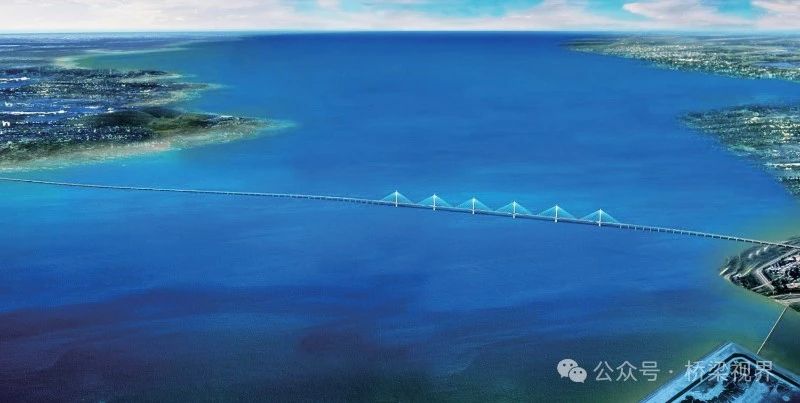
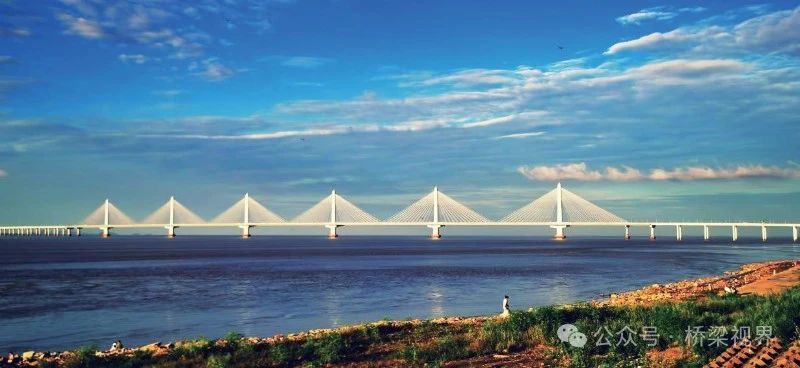
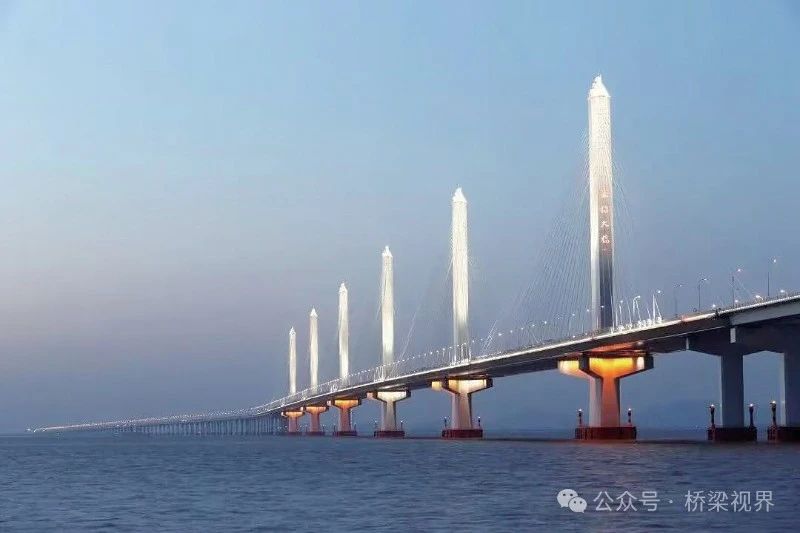
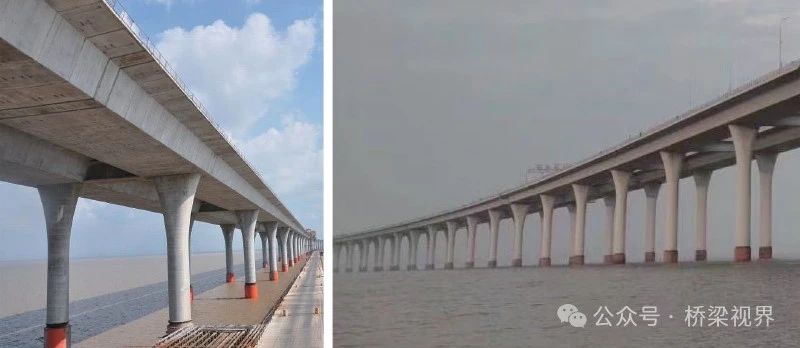
Zhang Jingao Yangtze River Bridge
The Zhang Jingao Yangtze River Bridge is located at the geometric center of the Yangtze River Delta and is a concrete measure to promote the national strategy of Yangtze River Delta integration. The area along the Zhang Jingao Bridge is one of the most economically developed regions in China. The landscape design of the bridge should fully incorporate the new era cross-river integrated development strategy of Jiangsu Province, the national strategy of Yangtze River Delta integration, and the concept of building a community with a shared future for mankind advocated by General Secretary Xi Jinping.
After repeated research and analysis, the triangular element was finally selected as the basic element for the landscape design of the Zhang Jingao Bridge.
The meaning of the main tower design: Because the main span of the bridge is 2,300 meters, making it the world’s largest span bridge, the crossbeam on the tower was originally a pair of hands tightly clasped together, embodying the concept of building a “community with a shared future for mankind.” Later, the pair of tightly clasped hands was abstracted into two intersecting triangles, fitting the national strategy of “Yangtze River Delta integration.” Additionally, one bridge connects three prefecture-level cities: Suzhou, Taizhou, and Nantong, aligning with Jiangsu Province’s strategy of cross-river integrated development.
The auxiliary towers also use triangular elements, echoing the main tower, constructed in a spread-wings flying shape, symbolizing economic takeoff and positive progress.
The shape of the anchorage is two triangles, echoing the “Yangtze River Delta” theme of the bridge tower.
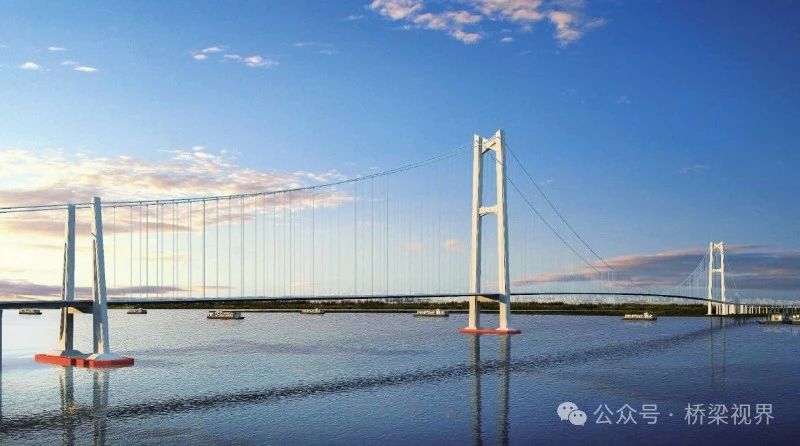
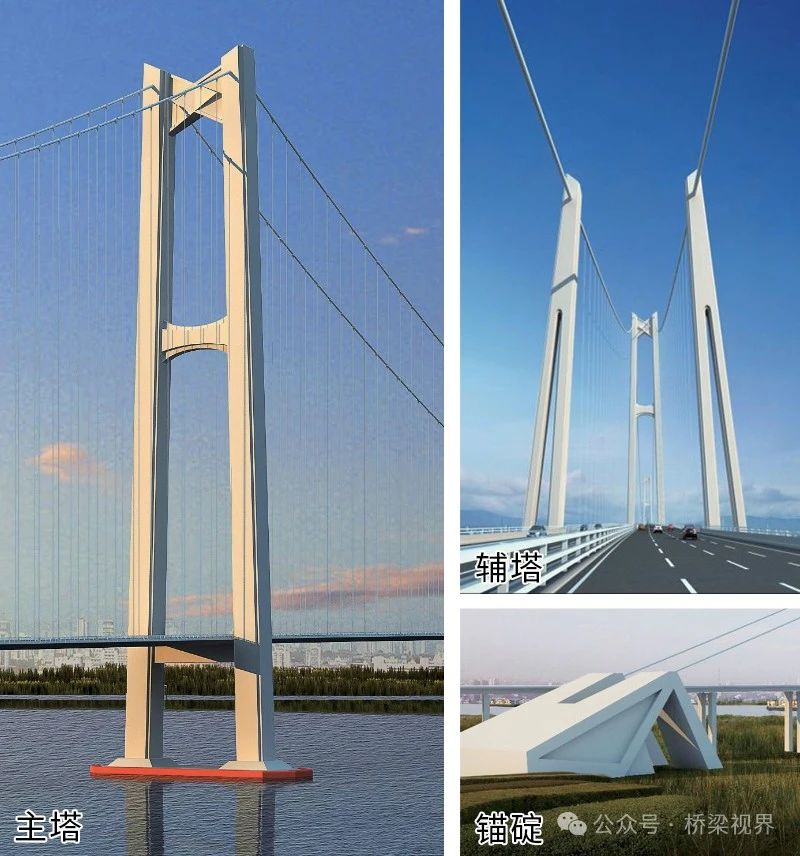
Qinglin Bay Bridge
The Qinglin Bay Bridge is a large bridge crossing the Yao River in Ningbo’s “Five Roads and Four Bridges” project. It is the throat project of the Airport Road and also a landscape bridge.
At that time, the bridge type scheme was produced through international bidding, with the UK’s Arup company winning the bid. Based on the principles of beauty, the main body image of the bridge is shaped from an artistic perspective to make the bridge blend with the environment as much as possible and highlight the landscape effect of the bridge.
The design of the Qinglin Bay Bridge should cater to the surrounding environment, reflecting refinement and being quite ornamental. At the same time, the pedestrian passage provides a good landscape platform for pedestrian passage and sightseeing. While meeting various functional requirements such as navigation, vehicle traffic, and pedestrian traffic, it creates a bridge structure form that is harmonious with the environment and novel and unique, forming a good landscape effect and reflecting the spirit of keeping pace with the times.
The landscape design is themed “Soaring Over Waves.”
“Soaring” annotation: This bridge is located on the Airport Road, and the bridge body shape resembles wings, with a posture ready to take off and spread its wings to fly.
“Over Waves” annotation: The tower design is simple and clear, like a sword pointing to the sky, with a rising and soaring momentum. Combined with the cables, it’s also like the mast of a sailing ship, giving a sense of riding the wind and waves, inspiring people’s spirits. It reflects Ningbo’s status as an international port city where merchants and ships gather, forging centuries of glory that embraces all rivers and swallows thousands. It symbolizes Ningbo’s leading position in the regional economic wave and its vigorous development trend, indicating the strength of economic construction and bright prospects.
The mast-shaped construction of the main body of the bridge reinforces the design concept of “riding the waves and setting sail on the sea.”
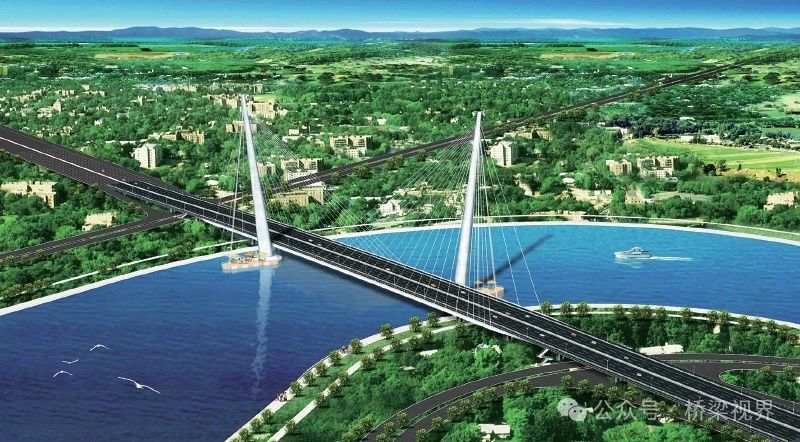
Zhoushan-Daishan Cross-Sea Bridge
The Zhoushan-Daishan Cross-Sea Bridge consists of 3 navigation bridges and 1 sea interchange. The tower designs of the South Navigation Bridge and the Main Navigation Bridge are the focus of the overall bridge landscape design. The tower design elements are extracted based on the following three elements: This project is near the Buddhist holy site of Mount Putuo. The overall design scheme of the tower comes from the jade vase held in the hand of the South Sea Guanyin on Mount Putuo. The jade vase symbolizes auspiciousness, wealth, harmony, and peace.
“A thousand prayers, a thousand responses; always be a boat to ferry people across the sea of suffering.” The design scheme for the upper part of the tower crown is derived from the “hands clasped” gesture of the South Sea Guanyin, symbolizing “praying for peace and gratitude for a good life.”
The daffodil is the city flower of Zhoushan. This element is also applied in the detailed design of the tower, adding a finishing touch and symbolizing auspiciousness and reunion.
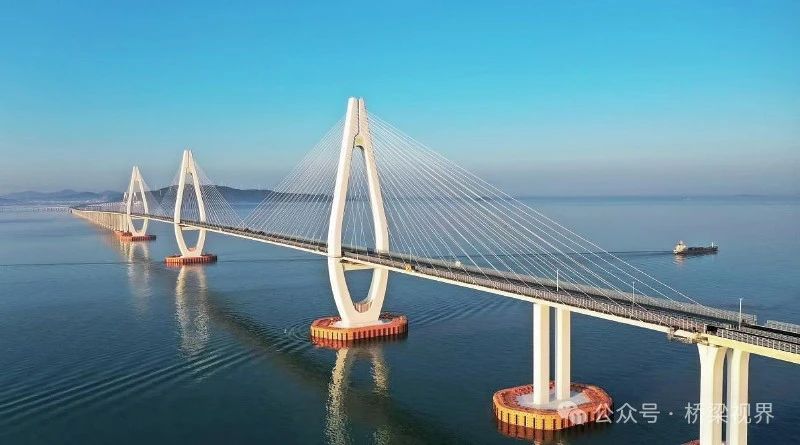
There are many factors influencing bridge landscape design schemes. Bridge landscape design not only reflects the collective wisdom of the design team but is also related to the local human history and customs of the project location. Overall, it expresses humanistic spirit through structural design and endows each bridge with special connotations and personality, making the bridge a dazzling light on the road ahead, illuminating more struggling people, thereby making the world more wonderful!
Published in / “Bridge” Magazine
2024 Issue 4, Total Issue 120
Author / Wang Rengui
Author’s Affiliation / China Communications Highway Planning and Design Institute Co., Ltd.
